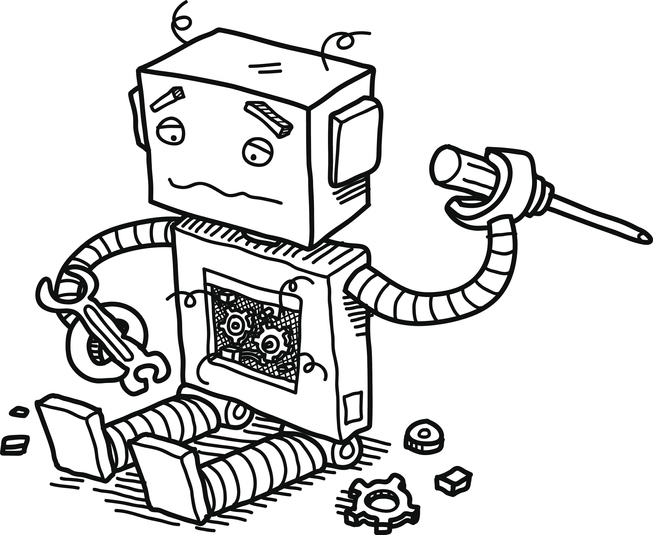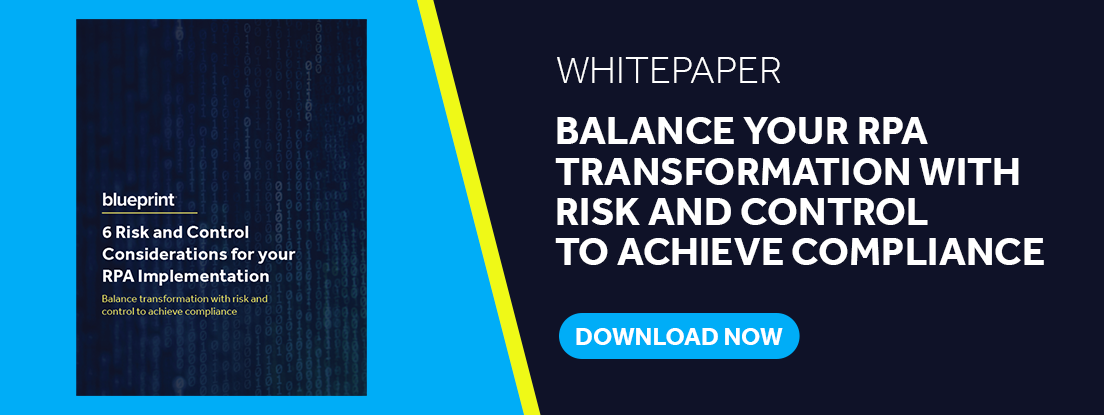4 Questions You Must Answer to Get your Risk and Control Team on Board with RPA
Despite increased investment into robotic process automation (RPA), risk management – an essential pillar of business performance improvement – remains relatively unchanged.
Businesses are adopting RPA to make high-volume, routine operations more efficient, but continue to have their risk, control, and compliance operations managed within paper-based documents and Excel spreadsheets – it's no wonder why we see headlines like:
Excel: Why using Microsoft’s tool caused COVID-19 Results to be Lost. Source: BBC
While hindsight is 20:20 – it's always easier to address mistakes after they happen – in these fast-paced times, organizations must address potential risks proactively and consider the impact costly mistakes can have on their vision, reputation, and success.
To ensure your RPA project goes off without a hitch, you need your risk and control professionals at the decision-making table. After all, RPA does have the potential to introduce new and unforeseen risks. Anticipate their pushback, and get your risk and control team on board with answers to these four common RPA implementation questions:
Is RPA the most appropriate technology?
While RPA can bridge the gap between separated processes, your risk and control team may question whether or not it's the most appropriate technology for the solution you're seeking.
You'll likely face questions about its flexibility as, at times, it can lead to costly delays during development.
To address their concerns, you should talk about the value of that flexibility when it comes to change management. RPA allows you to connect regulatory requirements to artifacts; when an update or change occurs, the team is immediately notified and has ample time to make the necessary updates. It's also worthwhile to discuss your strategy to govern RPA and ask your risk and control team to define policies and standards to promote consistency throughout development.
Discover Blueprint's Tracing and Impact Explorer
How are you going to take care of the bots?
Your bots are a part of your workforce, and much like humans, they require guidance. They are created as of a point in time, and changes to regulation, rule, policy, or control can negatively impact the bots' expected performance.
From a risk and control perspective, this looks like a PR nightmare.
To address any concerns, you should discuss two things:
- Strategy and Governance define the overall vision and standards for RPA at the enterprise level. Understanding this, the risk and control team can provide input on what protocols your bots should adhere to when a change occurs, ensuring there are no breakdowns in the future.
- Process Life Cycle consists of the identification, prioritization, development, and ongoing maintenance of RPA instances. Understanding this, the risk and control team can help you define the criteria for whether or not a process is automatable and determine which processes are a priority for automation.
Are these bots secure?
With the mainstream application of RPA, companies face increased risks which can weaken IT systems.
Your risk and control team will want to know the plan to ensure there is no abuse of privileged access, access entitlements are appropriately managed, and that sensitive data is properly stored. To address these concerns, explore the technology that will be used to deliver your RPA bots and plan, store, and design. They'll likely find comfort in knowing that there is a Digital Blueprint of everything so that they can show the regulator when the time comes.
Blog: What is a Digital Blueprint and Why Do You Need One
How will I prove to the regulatory team that everything is compliant if everything is digital?
If the agile development methodologies are followed, iterative processes and lack of documentation are likely to cause mild panic within the risk and control function.
You need to ensure that everything is documented and stored digitally within a centralized space so that the risk and control team can access it whenever necessary. Having everything stored digitally provides internal and external auditors with an accurate snapshot of how your automations are running and why your bots make certain decisions.
Learn More: Discover Blueprint's Collaboration Hub
How Blueprint can help bridge the gap between RPA and Risk and Control
Risk and control are essential to any business performance improvement project, especially RPA, and you need the right tools to bridge the gap between these siloed practices. Blueprint's Enterprise Automation Suite supports both the design and development of RPA and ensures that all regulatory obligations and enterprise constraints are considered and accounted for throughout the RPA life cycle. In addition, Digital Blueprints are centrally stored and versioned, so you can always provide evidence to your internal and external auditors by merely clicking a button.
Share this
Recent Stories

How to Improve Productivity, Efficiency, and Compliance Management within Insurance RPA

7 Hidden Risks of Automation Design in Business




